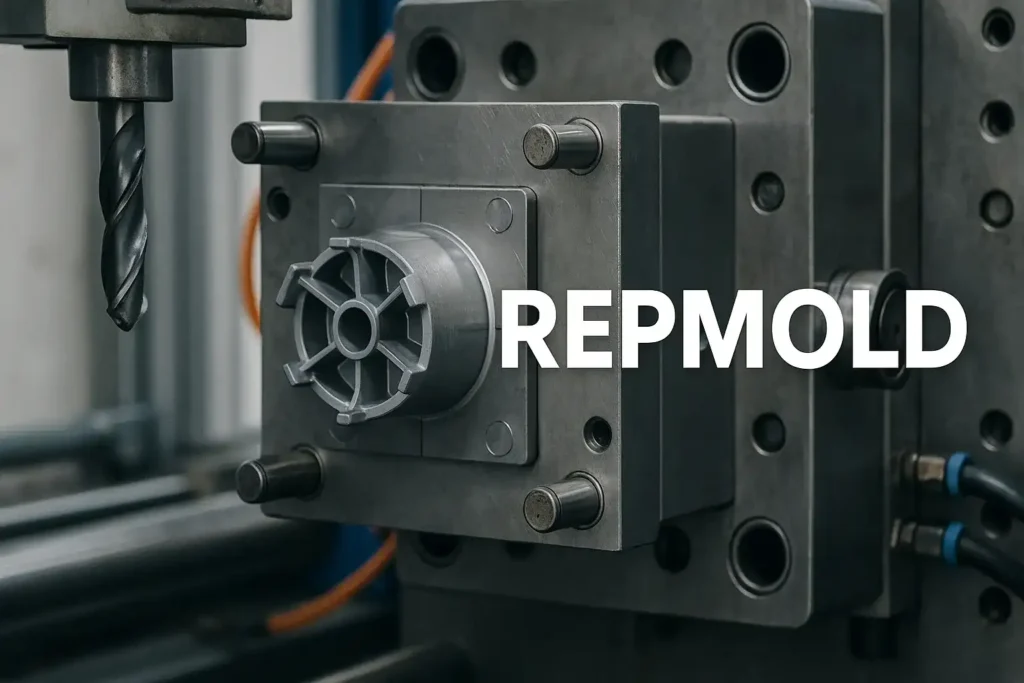Everywhere, businesses are undergoing significant transformations. Resource and environmentally deleterious old-fashioned manufacturing processes are gone. New age industries are looking for smart, fast, and new age manufacturing processes. RepMold is a new approach, and for good reason, is starting to gather attention. It is focused on combining precision, efficiency, and environmental accountability in a single method of production.
In this piece, we will walk through what RepMold is, its importance, how it functions, and why it is essential for manufacturing firms as well as end consumers. If you are a business owner, planning to enter the manufacturing sector or are simply concerned with environmental conscience, this is designed to explain one of the most critical production method innovations.
What Is Repmold?
Repmold is a technique aimed at minimizing waste and energy to produce consistent quality items. It integrates advanced molding technologies with best-suited materials to accommodate energy-efficient production.
Simply put, repmold is the ability to replicate a product consistently and perfectly while being resource efficient, and minimizing environmental impact.
The Idea Behind It
Traditional manufacturing often wastes a lot of raw material, time, and energy. Repmold brings a smarter mindset:
- Produce more, waste less.
- Reuse and recycle materials where possible.
- Maintain quality no matter how many parts are made.
This approach aligns with modern global goals toward a *circular economy*, where materials keep circulating instead of ending up in landfills.
Why Repmold Matters Today
Problems With Old Manufacturing
Conventional methods come with big drawbacks:
- Heavy pollution and carbon emissions
- Increased waste ending up in dumps
- Inefficient machinery and manual rework
- Higher long-term costs due to defects
Businesses are under pressure to fix these issues. Governments and consumers expect better sustainability.
Key Benefits for Industries
Repmold offers strong advantages that make it attractive for various sectors:
1. Reduced Material Waste
Precise molding significantly lowers scraps and rejected parts.
2. Cost Efficiency
Less waste means less spending on raw materials. Faster production also reduces operational costs.
3. Consistent Quality
Each part matches exact specifications, lowering the risk of defects and rework.
4. Sustainability
Using recyclable materials and cleaner methods supports environmental goals and improves a company’s brand image.
5. Innovation Potential
New shaping methods and materials allow creative product designs that were not possible before.
How Repmold Works
Main Principles
Repmold focuses on three main goals:
Precision: Accurate production without variations
Efficiency: Faster and optimized processing
Adaptability: Ability to adjust designs and materials easily
Step-by-Step Process Overview
While exact steps depend on the product and industry, the typical process is:
1. Material Selection
Recyclable or efficient materials are chosen to reduce environmental impact.
2. Mold Setup
Engineers create a mold that defines the exact shape and detailed structure of the final product.
3. Production Phase
Materials are processed under controlled conditions for accurate shaping.
4. Finishing & Inspection
Each item is examined to ensure it meets strict quality standards.
5. Recycling & Reuse Cycle
Leftover scraps and worn-out products are reused wherever possible to maintain sustainability.
Challenges in Adoption
Repmold isn’t completely easy to adopt. Companies may face:
- High initial investment in modern machinery
- Employee training requirements
- Scaling difficulties for very large production volumes
- Need for awareness and correct marketing to consumers
Even with these challenges, long-term benefits outweigh the hurdles.
Industries Benefiting From Repmold
Automotive
Vehicles require strong, precise, and lightweight parts. Repmold helps car manufacturers improve fuel efficiency and reduce production waste.
Aerospace
Aircraft components must maintain strict quality standards. This technique improves reliability while reducing costs.
Healthcare
Medical devices need extreme precision. Repmold ensures safety and consistency in tools and components.
Consumer Products
Everyday items like electronics, home appliances, and accessories can be made more durable and eco-friendly using these methods.
The Future of Repmold in Manufacturing
Smart Technologies Integration
Automation, robotics, and AI are becoming part of mold-based production. Machines can make micro-adjustments for maximum accuracy during manufacturing.
New Sustainable Materials
Research is underway to use more biodegradable, reusable, or recycled materials. This can make repmold even more environmentally friendly.
Global Shift Toward Green Industry
Sustainability is no longer optional. Businesses adopting repmold will lead future markets, while others risk falling behind.
Why Consumers Should Care
Consumers are becoming more conscious of how products are made. Choosing items manufactured responsibly:
- Reduces environmental harm
- Supports forward-thinking brands
- Improves product lifespan and reliability
- Encourages global sustainability trends
By supporting companies using repmold-style production, buyers can influence positive change.
Conclusion
Repmold also brings potential response to operational efficiency, quality, and sustainability challenges in contemporary manufacturing. This is what the world currently needs: efficient production with minimal environmental impact. Increased efficiency and production quality, along with reduced environmental impact, are all achievable goals.
As a business owner or a conscious consumer, supporting repmold products can lead to an impactful and self-sustaining, modern world.
Frequently Asked Questions
1 – What is repmold used for?
This helps maintain uniformity and quality in manufactured goods and captures the precision and accuracy of high quality products while olding waste.
2 – Which industries benefit the most?
Improvement to Automotive, Aerospace, Healthcare, Consumer goods, and Electronics sectors of the economy.
3 – How does it support sustainability?
Reduction of waste and a proactive approach to the use of materials results in accountable environmental impact of the manufacting process; energy and materials are used more efficiently.
4 – Is repmold expensive to start?
Long-term savings positive in consideration of the initial setup wherein savings of material and improvements in quality.
5 – What is the future of repmold?
Manufacturing will include more automated systems, and use more sustainable materials and practices, innovating standard and global manufacturing methodes.



